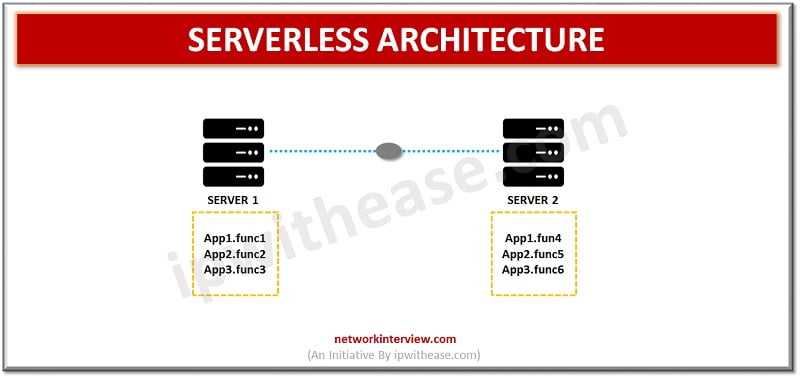
Serverless Architecture vs Traditional Architecture
Introduction to Serverless Architecture
Over the years organizations have invested money in buying costly servers. The traditional architecture requires large IT staff for maintaining data centres, training and hiring skilled personnel, tracking obsolete hardware and replacing it which would bring in heavy investment and increase in IT budget year by year. With the advent of cloud computing companies could rent storage space, processing power, memory and other infrastructure services and use them in pay as you use model.
Today we look more in detail about Serverless architecture and traditional architecture, understand their key differences, benefits and purpose they adopted for.
About Server less Computing
In Server less computing organizations need not to purchase servers or rent cloud space. Servers are involved but developers are not concerned with them. In serverless computing you pay only for services you use and the entire infrastructure is maintained by the service provider. This is a cheaper option to spend less and scale fast on demand. As backend services expand and you need more server space it can be easily availed. There is no need to shell out on servers, physical space and skilled staff to maintain this.

Benefits of Serverless Architecture
- Scalability – scaling up and down is the main feature of server less computing . The developers can do limitless coding while server providers can take care of increasing or decreasing demand of capacity required.
- Ease of coding – Developers can easily write independent methods to invoke calls to backend and function as a service coding is quick and free of any hassles.
- Faster delivery – code deployment and bug fixing time is reduced substantially. Testing and fixing on piecemeal basis is available instead of major overhaul to developers.
About Traditional Architecture
A traditional architecture has physical servers which are accessed over the Internet to provide access to services and information. With physical servers, development, management, and even usage is complex affair at various stages and require expert or skill staff to support it.

Comparison Table: Serverless vs Traditional Architecture
FUNCTION | SERVERLESS COMPUTING | TRADITIONAL ARCHITECTURE |
| Definition | Server less is a cloud computing model in which cloud providers manage the allocation and provisioning of servers in a dynamic manner. | Traditional server is quite large which can be accessed over web and provide access to services and applications. |
| Costs | Vendor charges based on number of functions executed which are done timeslots are allocated to run a function. | In traditional architecture costs are always there to maintain it. |
| Networking | Required to setup private APIs. | Traditional architecture require you to access code via regular IP’s |
| Integration | In Server less computing libraries and integrations are made available within the application which can make it heavy or sluggish. | Application dependency over 3rd party libraries such as coding or cryptography require traditional computing. |
| Multiple environments | It is easy to setup multiple environments in server less architecture. | In traditional architecture it is tough and requires additional expense, time to setup multiple environments. |
| Timeout | Timeouts requirements are more stringent in server less computing and may not suite applications requiring external referencing or having variable execution times. | Traditional architecture is well suited for applications require variable execution times. |
| Scalability | Scaling up and down is very easy in server less computing but coders may not be able to mitigate glitches when new functions or executions are instantiated. | Traditional architecture has limitations in terms of scalability and it can’t scale up and down on a flicker and require careful planning and estimation on resources requirement while hosting an application and also developers require to configure auto scaling and load balancing manually. |
| Maintenance | Infrastructure maintained by provider such as AWS, Lambda, Azure etc. | Users can control underlying infrastructure such as physical servers, VMs etc. |
Download the comparison table: Server less vs Traditional Architecture
Conclusion
Server less computing is the future of cloud computing. It is expected to grow around USD 200 million in 2022 as it gives immense benefit of costs over on premises deployments. It offers backend services to developers to run and execute their applications without worrying about underlying infrastructure and when resources are not used no computing resources are allocated to the application.
Continue Reading:
What is Serverless Computing? Cloud Services
Top 10 Serverless Compute Providers
Top 10 Server Monitoring Tools & Software
Tag:cloud, comparison



